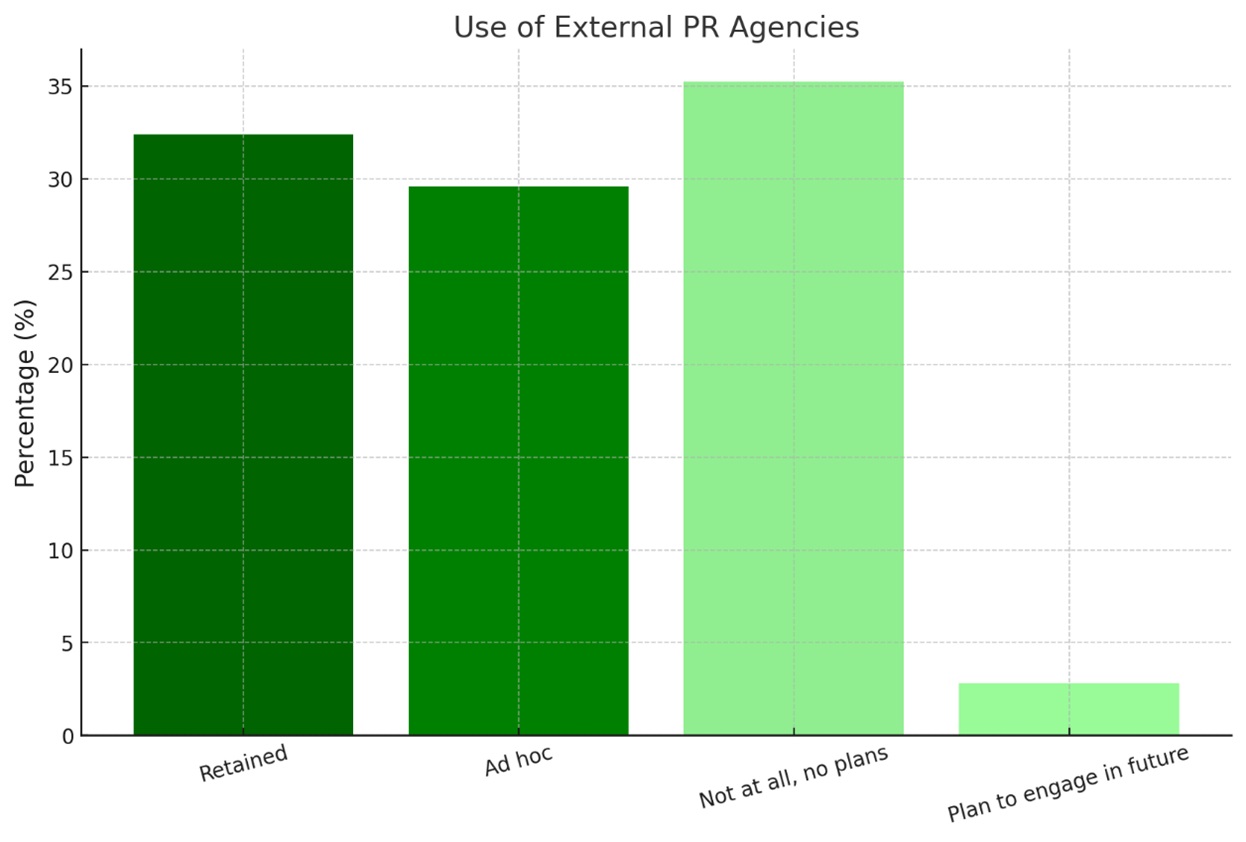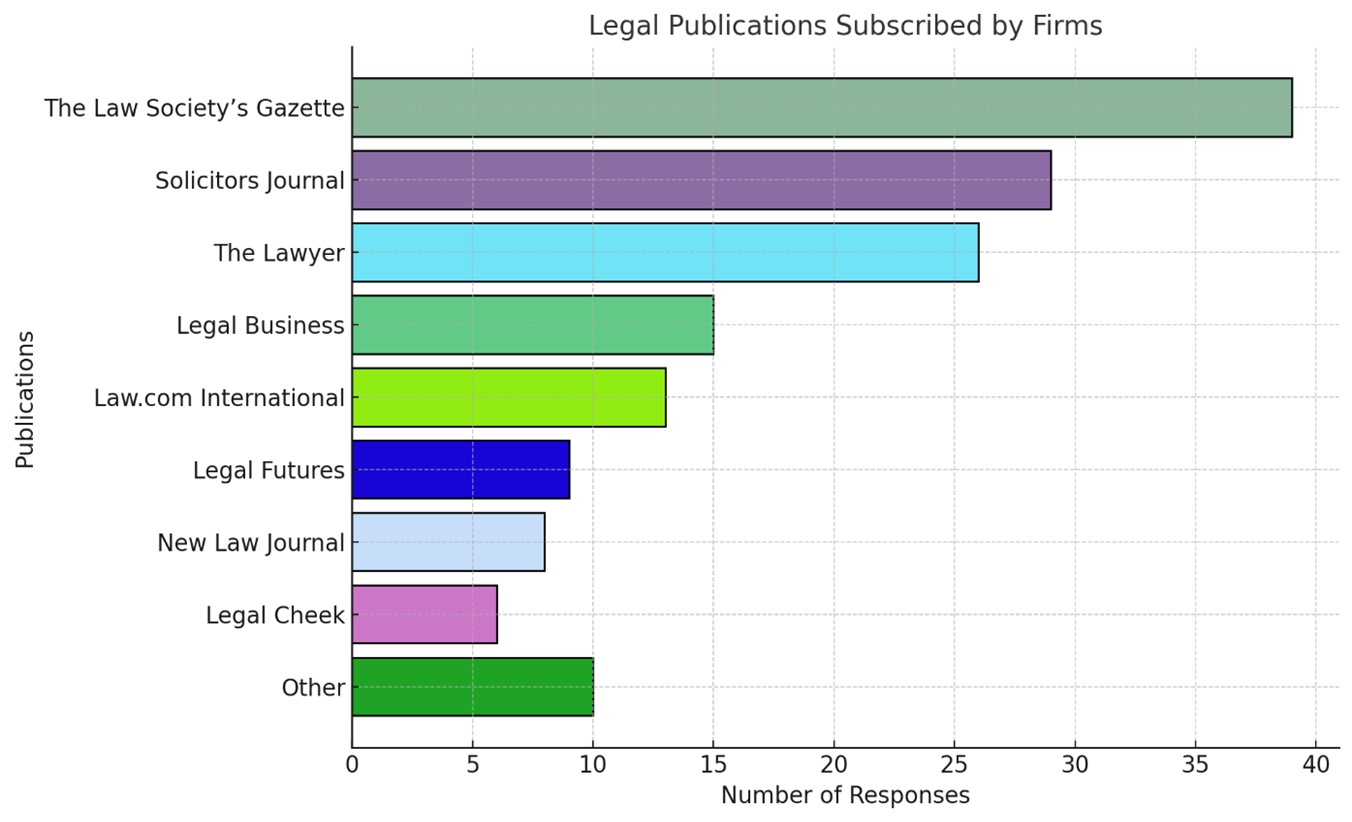Legal marketing trends revealed

By
Survey Unveils Key Insights into Marketing Practices, PR Strategies, and Referral-Based Business Generation
In partnership with Kysen PR, Solicitors Journal conducted a comprehensive survey of marketing professionals in the legal sector to explore how law firms and other legal organisations acquire new business. The survey, aimed at over 11,000 marketing professionals, provides valuable insights into the most effective strategies for client acquisition, as well as the pivotal role that legal media plays in shaping marketing efforts.
This report delves into the findings of the survey, focusing on marketing trends, the use of public relations (PR), and the importance of legal media in driving business growth. By uncovering the factors that influence business development in the legal sector, the survey sheds light on how firms can refine their strategies to stay competitive and grow their client base.
1. Marketing Team Structures and PR Roles
The survey revealed diverse marketing structures across law firms, with respondents spanning from small boutique firms to large, multinational practices. One notable trend was the presence of dedicated PR roles in nearly half of the organisations surveyed, with 43.66% of respondents confirming that they have PR specialists within their firms. For the remaining 56.34%, PR responsibilities are either shared with broader marketing teams or outsourced to external PR agencies.
This finding underscores the growing importance of PR in legal marketing. However, the diverse approaches—whether in-house or external—suggest that flexibility remains key in adapting PR efforts to suit the unique needs of each firm.
Graph 1: Dedicated PR Roles?

2. Engaging with External PR Agencies
The survey also explored how firms utilise external PR agencies. It revealed that a significant number of firms engage PR agencies on either a retained or ad-hoc basis. Specifically, 32.39% of respondents have ongoing PR retainers, while 29.58% turn to agencies as needed. Conversely, 35.21% of firms do not currently use external agencies, and a further 2.82% indicated plans to do so in the future.
These statistics suggest that while many firms are committed to long-term PR partnerships, a considerable number prefer a more flexible, on-demand approach to external PR services. This aligns with the broader trend of firms increasingly recognising the value of PR, but also seeking adaptable solutions that can be tailored to specific needs.
Graph 2: External PR Agency Usage

3. The Role of Legal Media: Why It Matters
The survey revealed key insights into why legal professionals engage with legal media. A striking 90% of respondents said they read legal publications primarily to stay informed on industry news and developments. This highlights the critical role that legal media plays in keeping professionals up-to-date on changes within the legal landscape.
Additionally, 60% of respondents cited thought-leadership articles as a key reason for engaging with legal press. This trend demonstrates the increasing value of establishing expertise and authority in niche legal areas, with firms using media as a platform to share insights and bolster their reputation.
Interestingly, 58.57% of respondents also use legal media to monitor competitors, while 43.28% highlighted the Solicitors Journal as a key resource for staying informed on developments within the sector. This insight reinforces the importance of legal publications not just for disseminating news but also for competitive analysis.
4. Legal Publications Subscribed To
In terms of subscription preferences, the Law Society’s Gazette - Free circulation (58.21%) was the most popular choice, with the Solicitors Journal coming in second at 43.28%. Other publications such as The Lawyer (38.81%) and Legal Futures (13.43%) also featured in the survey, although their readership was comparatively smaller.
This data highlights the dominance of a few key publications within the legal community, with the Solicitors Journal and Law Society’s Gazette being particularly influential among legal professionals.

5. Legal Media as Part of Marketing Strategy
Legal media plays a crucial role in law firms' marketing strategies. A majority of respondents, 60.87%, use legal publications for general brand positioning, demonstrating the significance of legal press in shaping a firm’s public image. Additionally, 36.23% use it for employer branding, highlighting the importance of media exposure in attracting top legal talent.
Notably, 34.78% of respondents indicated that they use legal media to generate referrals—an insight that underscores the power of third-party endorsements in business development. Legal publications serve as a channel through which firms can gain visibility, cultivate trust, and encourage client referrals.
6. The Importance of Legal Press Coverage
The survey results revealed that 98.25% of respondents consider featuring in the legal press to be important. This near-universal agreement highlights the recognition within the legal community of the power of media exposure. A significant 82.46% of respondents singled out the Solicitors Journal as being particularly impactful, further demonstrating its importance as a tool for gaining visibility and establishing credibility.
7. Referral-Based Business Generation
When it comes to new business generation, referrals were identified as one of the most important sources of growth for law firms. A substantial 25% of new business is generated through referrals from other law firms. Word-of-mouth referrals account for a further 46%, contributing to nearly half of all new business for many firms.
Additionally, organic website traffic (17%) and event-driven marketing (e.g., conferences and seminars) play vital roles, although they contribute less than referrals. This reinforces the ongoing importance of word-of-mouth and referral networks in the legal industry, with firms continuing to rely heavily on recommendations from colleagues and clients.
Conclusion
The findings of the Solicitors Journal and Kysen PR survey provide a comprehensive snapshot of the current trends in legal marketing. The importance of legal media, particularly publications like the Solicitors Journal, is evident in both brand positioning and business development strategies. PR, whether handled in-house or through external agencies, plays a central role in shaping a firm’s profile and fostering new business opportunities.
For law firms aiming to grow their client base, the survey highlights several key takeaways:
- Legal media is not just about staying informed—it is also a platform for showcasing thought leadership, monitoring competitors, and generating referrals.
- PR and media coverage should be strategically used to enhance a firm’s reputation, reach new audiences, and build a network of referrals.
- The dominant role of referrals, both from other firms and through word of mouth, underscores the need to cultivate and maintain strong professional relationships.
By embracing these insights, legal marketing professionals can refine their strategies to better leverage media, enhance their PR efforts, and tap into the power of referrals to drive sustained business growth.